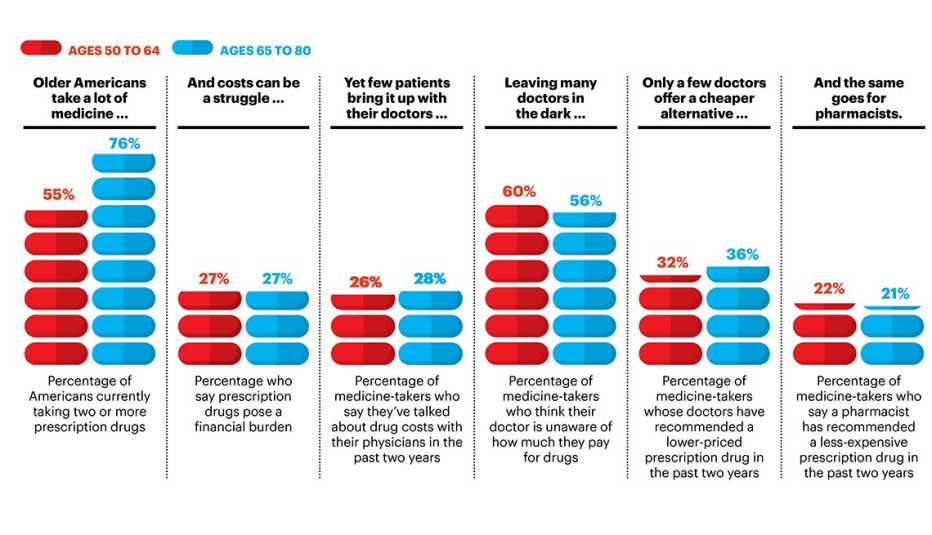AARP Hearing Center
The vast majority of patients between 50 and 80 years of age don’t talk to their health care providers about the cost of the medicines being prescribed for them or about whether less costly alternatives are available. That’s one finding of a new University of Michigan poll sponsored by AARP and Michigan Medicine, the university’s academic medical center.
Nearly two-thirds of those responding to the University of Michigan National Poll on Healthy Aging said they took two or more prescription drugs. In addition, 27 percent of those surveyed said that the cost of their prescription drugs posed a financial burden.
“We know that if patients don’t fill their prescriptions and take their drugs it will not help them maintain their health,’’ said Preeti Malani, director of the poll and a professor of internal medicine at the University of Michigan Medical School. What these poll results suggest, Malani said, is an opportunity for doctors and their patients to talk about the affordability of the medicines being prescribed.
Some 42 percent of respondents said they thought their doctors already knew the price of the medications they were prescribing. But the poll results show that among those who said their drug costs posed a burden, nearly half had not talked to their doctors about the price. And 61 percent of all the respondents had not talked to their providers about drug prices.
“The message to patients,” Malani said, “ is don’t be afraid to ask. One of the things we found in the poll is that among those who said they had a conversation with their doctor about costs, 67 percent got a recommendation for a less expensive drug.”
Alison Bryant, senior vice president of AARP Research, said the issue is complicated by variations among insurance plans. “Talking to your doctor or pharmacist is especially important, as out-of-pocket costs can vary greatly depending on the insurance coverage that midlife and older adults have, as well as on the price of the drug set by the manufacturer,” she said. “Working with your doctor or pharmacist to find a less costly alternative may help to reduce your overall cost burden.”


Managing the cost of prescription drugs becomes more complex the more prescriptions a patient takes. The poll found that 63 percent of older adults take two or more prescription drugs, 47 percent take between two and five prescriptions, and 16 percent take six or more. Sixty-nine percent reported seeing two or more doctors each year, which adds to the complexity of drug management. The more drugs people take, the more likely they are to say costs are a problem.


































































